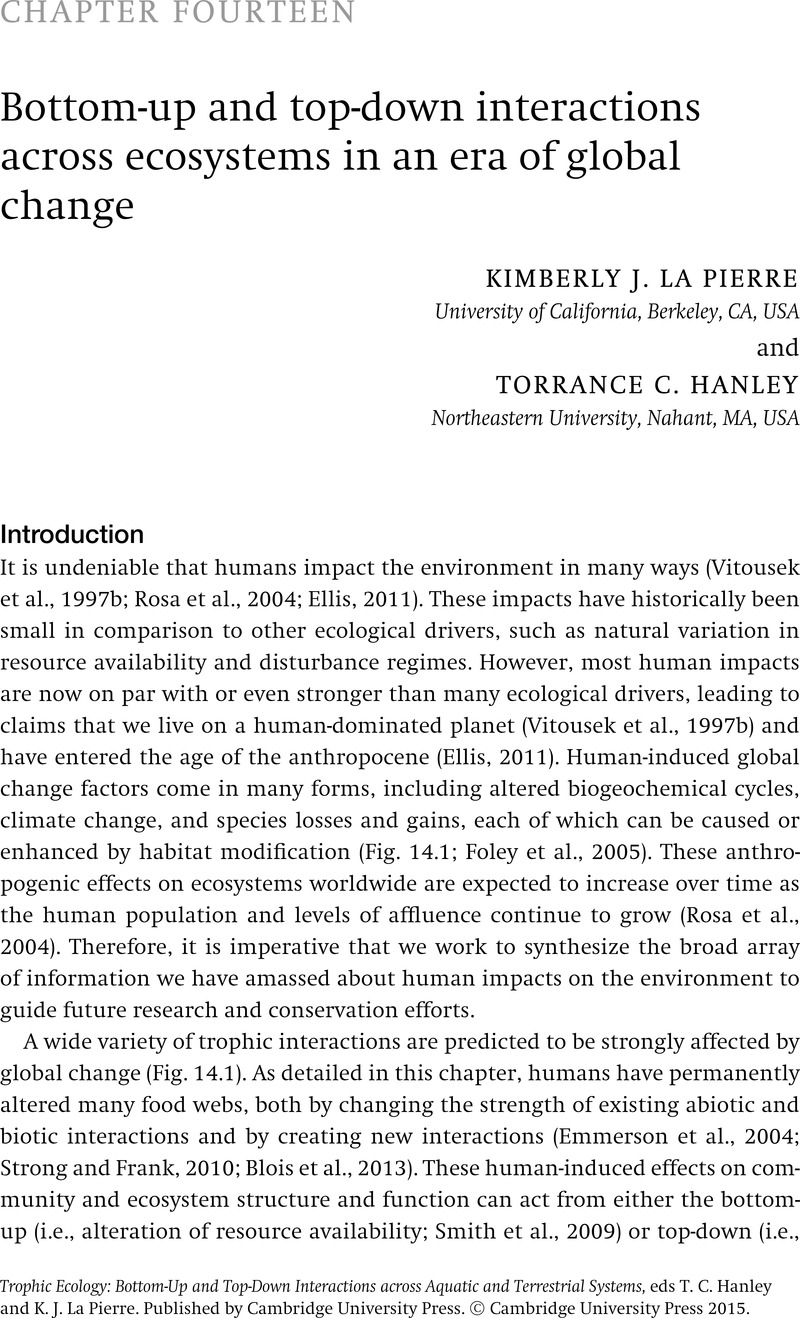Book contents
- Frontmatter
- Contents
- List of contributors
- Preface
- Part I Theory
- Part II Ecosystems
- Part III Patterns and Processes
- 8 Influence of plant defenses and nutrients on trophic control of ecosystems
- 9 Interactive effects of plants, decomposers, herbivores, and predators on nutrient cycling
- 10 The role of bottom-up and top-down interactions in determining microbial and fungal diversity and function
- 11 The question of scale in trophic ecology
- 12 The role of species diversity in bottom-up and top-down interactions
- 13 Plant and herbivore evolution within the trophic sandwich
- 14 Bottom-up and top-down interactions across ecosystems in an era of global change
- Index
- References
14 - Bottom-up and top-down interactions across ecosystems in an era of global change
from Part III - Patterns and Processes
Published online by Cambridge University Press: 05 May 2015
- Frontmatter
- Contents
- List of contributors
- Preface
- Part I Theory
- Part II Ecosystems
- Part III Patterns and Processes
- 8 Influence of plant defenses and nutrients on trophic control of ecosystems
- 9 Interactive effects of plants, decomposers, herbivores, and predators on nutrient cycling
- 10 The role of bottom-up and top-down interactions in determining microbial and fungal diversity and function
- 11 The question of scale in trophic ecology
- 12 The role of species diversity in bottom-up and top-down interactions
- 13 Plant and herbivore evolution within the trophic sandwich
- 14 Bottom-up and top-down interactions across ecosystems in an era of global change
- Index
- References
Summary

- Type
- Chapter
- Information
- Trophic EcologyBottom-up and Top-down Interactions across Aquatic and Terrestrial Systems, pp. 365 - 406Publisher: Cambridge University PressPrint publication year: 2015
References
- 1
- Cited by



